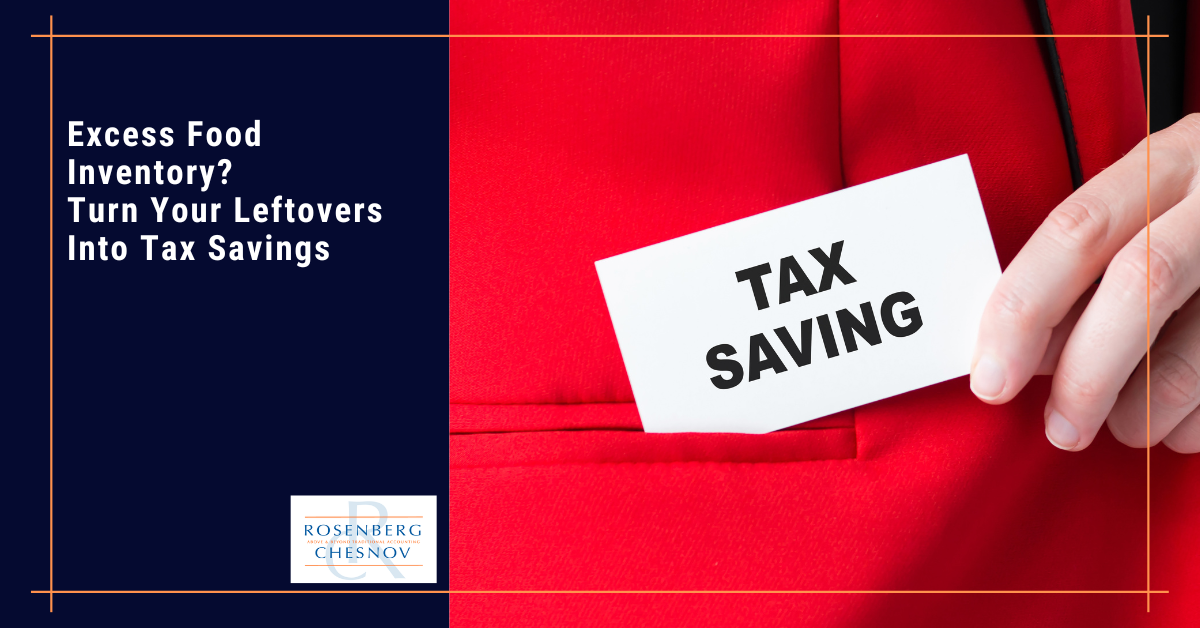What is the enhanced food deduction?
Charitable contributions can come with plenty of financial and emotional benefits for businesses and individuals.
However, if your business makes charitable food contributions, you could be eligible for a more significant write-off than the standard deduction.
Typically, a business can deduct the lesser of the Fair Market Value (FMV) of the inventory on the date of contribution — or the original cost basis. Under the EDDF, on the other hand, a business could be eligible for a deduction above the cost basis, depending on certain conditions.
Essentially, the IRS rewards qualified food donors by:
- Allowing deduction of inventory costs PLUS half the foregone profit if items were sold at fair market value – a significant boost over the standard deduction of just basis cost
- Expanding maximum annual deductibility for food donations from the standard 15% cap to 25% of taxable income, further increasing potential savings
How does the enhanced donation tax deduction work?
Let’s walk through a hypothetical example…
- ABC Grocery Store donates 1,000 pounds of potatoes with a fair market value of $1 per pound to a local food bank, totaling $1,000 worth of potatoes
- ABC Grocery’s cost basis in the potatoes was $300 for the 1,000 lbs. If sold at the fair market value of $1 per pound, ABC would have generated $1,000 in revenue and $700 in profit.
- Under normal deduction rules, ABC could only write off its $300 basis cost for the donation.
With the EDDF, ABC can deduct the larger of:
- 1. Cost Basis x 2 = $300 x 2 = $600
OR
- 2. Cost Basis + (Expected profit / 2) = $300 + ($700 / 2) = $650
So ABC can deduct $600 under the EDDF, compared to just the $300 cost basis otherwise. And remember, companies can deduct up to 25% of their total taxable income under the EDDF versus just 15% usually.
The opportunities to convert leftover food into tax savings quickly add up!
What businesses qualify for the EDDF?
To qualify for EDDF, businesses must meet the following conditions:
- The donated food must be “apparently wholesome.” This means it should be fit for human consumption and meet all federal, state, and local quality and labeling standards.
- The food should be used exclusively for the needy, the ill, or infants.
- The contribution should align with the organization’s exempt purpose.
- The donated food must not be exchanged for money or any other consideration.
- The organization should provide a written statement affirming that it will comply with the above requirements.
- The food must comply with the Federal Food, Drug, and Cosmetic Act, and the organization cannot be a private non-operating foundation.
The good news is that the EDDF tax incentive applies broadly to most types of business entities, including:
- C Corporations
- S Corporations
- Partnerships
- Limited Liability Companies (LLCs)
- Sole Proprietorships
This means almost any company can reduce taxes by donating excess wholesome food inventory matching the above guidelines.
Moreover, if a business cannot utilize its entire EDDF in a particular year, the unused portion can be carried forward for up to five years. (However, if a business consistently donates more than the allowed limit, these carryforwards may never be used. Hence, it’s crucial to plan the EDDF strategically every year.)
More good news for C corps: The general limitation of 10 percent of taxable income on C corporation contributions does not apply to the EDDF. (Again, there is a catch — the 10 percent limit that applies to other contributions is reduced by the amount of the applicable food inventory contributions.)
Of course, maintaining detailed records that validate your eligible donations is imperative to substantiate your deductions.
How do you write off donated food on your taxes?
Turning excess food inventory into enhanced tax savings for your business using the EDDF involves straightforward steps:
1. Identify and Quantify Excess Inventory
Regularly review inventories across perishable and shelf-stable items to pinpoint predictable streams of excess food left unsold or unusable. Quantify typical weekly/monthly volumes to identify reliable donation pools.
2. Locate Eligible Charities with Recovery Capabilities
Research non-profit hunger relief charities like food banks and soup kitchens operating in communities where your businesses have locations. Determine if they have the capacity, transportation, and storage to consistently accept bulk donations of your specific food types.
3. Formalize Arrangements
Reach out to mutually interested groups to coordinate formal donation plans. Seek commitments documenting their exclusive usage of items for charitable hunger purposes and acknowledge your responsibility for properly handling items.
4. Track Donations Meticulously
Rigorously record every donated item, corresponding fair market value, original cost basis, and expected profit margin of items sold. Be sure to maintain files containing documented acknowledgments and usage commitments from the charities.
5. Claim Enhanced Deductions
Provide complete documentation to your tax accountant so enhanced donation deductions of up to 25% of taxable income can be rightfully claimed.
What potential pitfalls should businesses anticipate?
When a business donates food, it reduces the inventory, reducing the cost of goods sold (COGS).
However, the EDDF allows businesses to claim a deduction that is potentially larger than the actual cost of the donated food.
In a partnership setup, this approach can cause issues. For instance, if a business donates food worth a certain amount, that amount is taken off its inventory cost and claimed as a charitable contribution.
When that inventory is reclassified as a charitable contribution on the partner’s tax return, it can increase taxable self-employment income, thereby potentially increasing the tax liability. (For S Corporations, reducing the cost of goods sold doesn’t have an impact unless the shareholder can’t use it on their personal return.)
More generally, when considering tax strategy, any business should conduct a thorough cost-benefit analysis and examination of its unique circumstances. Depending on your industry, the nature of your services, and the actual cost of your inventory, you may find that the EDDF is simply not cost-effective for your business.
Likewise, as discussed above, unused EDDF or an increase in self-employment income could make this deduction more trouble than it’s worth for your business.
At the same time, the EDDF is an obvious win for many businesses with excess food inventory.
To learn precisely how the EDDF could impact your bottom line and start reaping the rewards while spreading goodwill, consult with tax professionals…like us!
Would you like some help?
If you are a client and would like to book a consultation, call us at +1 (212) 382-3939 or contact us here to set up a time.
If you aren’t a client, why not? We can take care of your accounting, bookkeeping, tax, and CFO needs so that you don’t have to worry about any of them. Interested? Contact us here to set up a no-obligation consultation.
Stay informed
Interested in receiving updates in your mailbox? Check out our newsletter, full of information you can use. It comes out once every two weeks, and you can register for it below.





